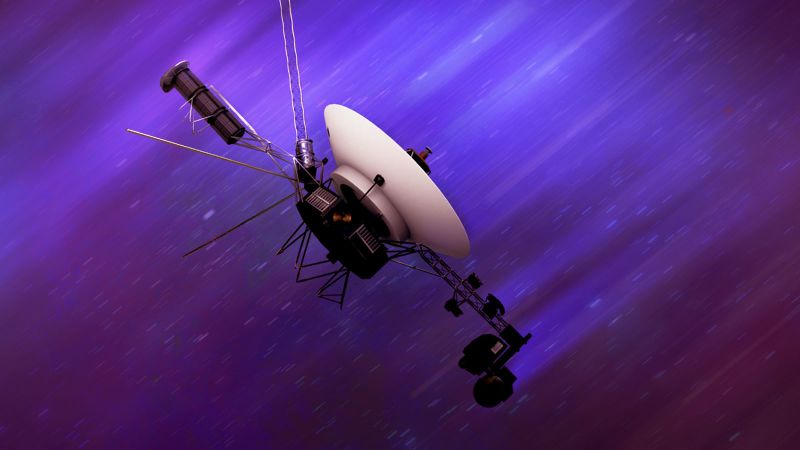NASA has successfully revived thrusters aboard Voyager 1, the farthest spacecraft from Earth, just in time to avert a potential communications blackout. This remarkable feat was achieved through a series of creative engineering solutions as the spacecraft faced a critical issue: the malfunction of its thrusters, which could have left the agency unable to maintain contact with this historic mission.
Voyager 1, which was launched in September 1977, relies on multiple sets of thrusters for proper functioning. Among these, the primary thrusters are essential for orienting the spacecraft so that its antenna remains pointed towards Earth. This alignment is crucial for maintaining communication and transmitting valuable data collected from interstellar space, located approximately 15.5 billion miles (about 25 billion kilometers) away from our planet. The spacecraft has been operational for an astounding amount of time, relaying groundbreaking discoveries across centuries, but recent concerns regarding its backup systems raised alarms among mission engineers.
The situation became critical when it was discovered that the thrusters responsible for controlling the spacecraft’s roll have not functioned since 2004 due to failures in internal heaters. Since then, Voyager 1 has depended heavily on its backup roll thrusters, which also faced risks associated with propellant residue buildup due to years of operation. As residues accumulated, engineers aimed to avoid potential clogging by alternating commands between the primary and backup thrusters, supplemented by trajectory thrusters used during planetary flybys in the 1980s. However, despite managing operations effectively for years, concerns grew that these backup systems could also fail in the near future, leading the team to devise a plan to revive the original roll thrusters.
Kareem Badaruddin, Voyager mission manager at NASA’s Jet Propulsion Laboratory (JPL) in Pasadena, California, noted that the team had previously written off the primary roll thrusters as non-repairable. However, with the looming threat of clogging, the engineering team revisited their designs to determine if they could resurrect the defunct thrusters. They considered the possibility that a fault in the circuits controlling the heaters could be addressed by restoring their original power supply position, potentially reviving the roll thrusters.
This endeavor wasn’t straightforward, mainly due to the spacecraft’s extreme distance—located beyond the heliosphere, the solar system’s protective bubble of magnetic fields and particles. The team had to take significant risks by activating the primary roll thrusters without fully guaranteeing their functionality. The challenge was fraught with peril since if Voyager 1 drifted too far from its guide star, the onboard programming would trigger the roll thrusters to engage automatically, potentially leading to a catastrophic explosion if the heaters were not operational at that moment.
In addition to these technical challenges, the team faced a strict time constraint, compelled by the scheduled upgrades to a massive Earth-based antenna in Canberra, Australia. slated to take place until February 2026, which limits communications with the Voyager spacecraft. The antenna is vital due to its superior signal strength, enabling commands to be sent to the probes, sparking urgency amongst engineers to perform tests on Voyager 1’s thrusters before a potential communication hiatus.
On March 19, commands were sent to activate both the thrusters and heaters, leading to a nail-biting wait for results to stream back from the spacecraft, which takes over 23 hours due to the vast distances involved. Fortunately, as data began flowing in, engineers saw indications that the thruster heaters were indeed warming up. The excitement in the control room was palpable, and Todd Barber, the mission’s propulsion lead, expressed immense satisfaction, deeming it a “miraculous” revival of systems once thought irreparably lost.
This successful operation not only emphasizes the ingenuity and resourcefulness of the NASA engineering team but also reinforces the importance of continued exploration and communication with the farthest reaches of space. The revival of the primary roll thrusters is a remarkable step for Voyager 1, ensuring it remains a valuable asset in the quest for knowledge about our universe.



